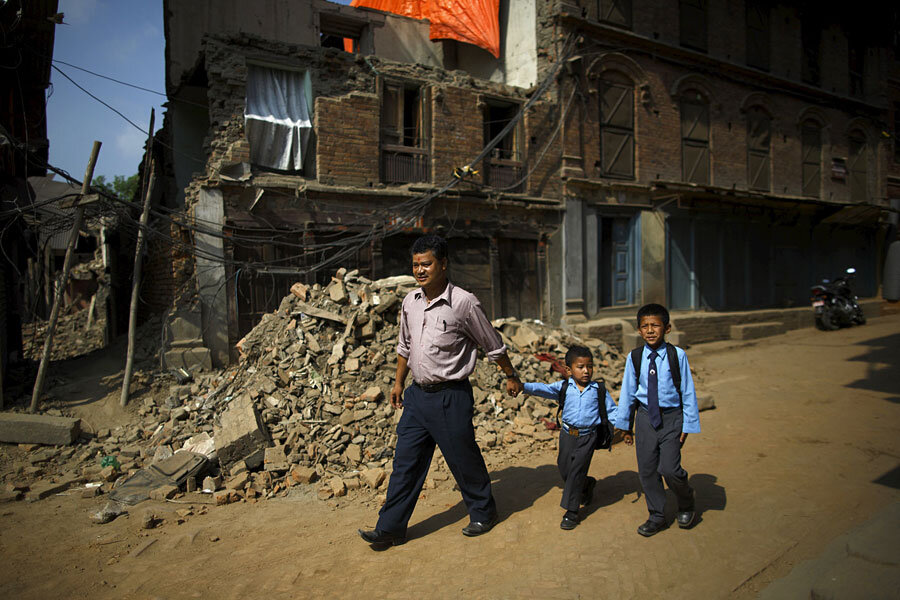Five weeks after big quake, Nepal's schools reopen
Loading...
| Kathmandu
Thousands of children affected by last month's earthquake in Nepal returned to schools on Sunday, a working day in the Himalayan nation, five weeks after the disaster killed more than 8,600 people and destroyed many homes.
Dressed informally, children clutched their parents' hands before filing past ruins of collapsed buildings to enter tarpaulin tents and makeshift cottages that will serve as their schools until their old one is re-built.
More than 32,000 classrooms were destroyed across Nepal when a 7.8 magnitude earthquake struck on April 25, affecting almost a third of the 28 million population. A second quake of 7.3 magnitude on May 12 has hampered efforts to rebuild.
"I am nervous. It is painful to see my classroom in rubble," said Shasham Shrestha, a tenth grader at the Kuleswor Awas Secondary School in Kathmandu.
Shrestha and his friends stood near the collapsed walls of a classroom as teachers assured parents of safety and regular classes.
Hari Lamsal, an education ministry official, said opening of schools was important to show that life is getting back to normal.
"We will construct temporary learning centers for schools because reconstruction of old buildings will take time," Lamsal said.
The government and aid agencies have built 137 temporary learning centers for 14,000 children who attended schools across Nepal on Sunday.
Aid workers said over 4,500 education centers will have to be built to accommodate students who have been forced out of their classrooms by the earthquake.
Nearly a million children have been severely affected by the earthquakes, according to the United Nations Children's Fund (UNICEF).
"Education can't wait for all recovery and reconstruction," Tomoo Hozumi, UNICEF representative in Nepal, told Reuters on a visit to temporary learning center, a plastic roofed structure made from long bamboo strands woven as mats to create walls.
"Opening of schools even in temporary centers has several benefits. It provides psychosocial recovery of children who are in stress, protects them from violence ... the risk of being trafficked and their parents can go to work," Hozumi said.
UNICEF says $24.1 million was needed to set up the learning centers, train more than 19,000 teachers and volunteers on psychosocial support.
School authorities said children will be made to play and interact with teachers before studies start in two weeks.
(Reporting by Gopal Sharma, Editing Rupam Jain Nair and Raissa Kasolowsky)





